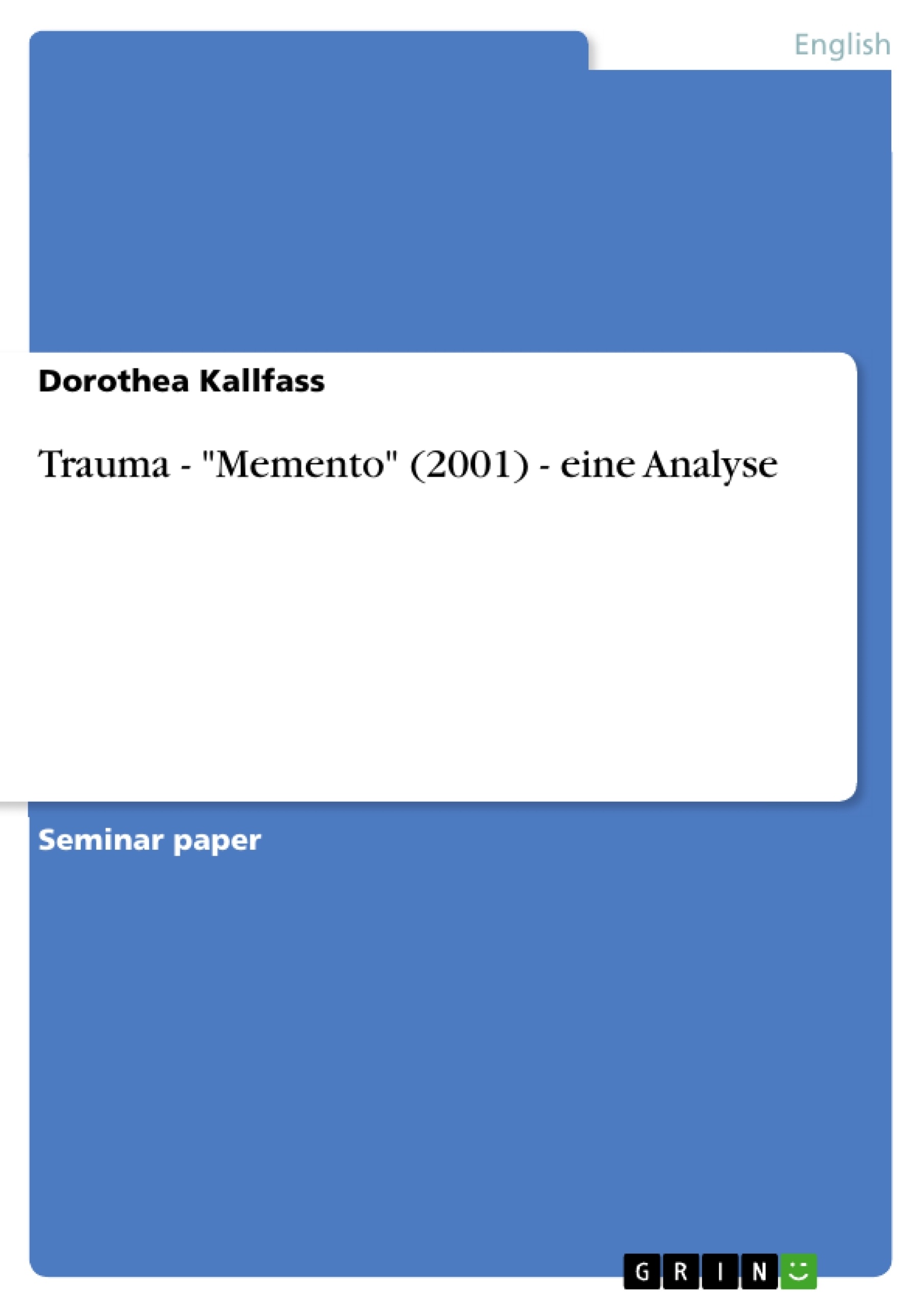The movie Memento shows the relation between overwhelming experience and psychopathology. The idea that some memories can become the nucleus of later psychopathy fascinated psychologists like Pierre Janet, and made them look closely on how the mind processes memories. The Christopher Nolan movie imitates this neural process by using different techniques: there is the backward structure with its constant overlapping and adapting of old and new information for example. Also, the mixture of black and white images frozen in space and time, together with colourful, “realistic” pictures of a developing plot, leaves the audience confused as to what is past and what is present, what is real and what is imagined. And finally, the erratic movement can be seen as an imitation of the movement of our mind when we remember.
The movie MEMENTO (2001) by Christopher Nolan introduces a hero torn to pieces: Leonard lost his wife, and now cannot keep memories about his life after the incident anymore. While watching the movie, we gather scattered pieces of the protagonist’s past and his identity bit by bit, trying to make a whole picture out of them by arranging all the information to a coherent story. In different words: we have to take part in the creation of the narrative by reconstructing Leonard’s past ourselves, according to the different testimonies the film offers us. Filmmaker Christopher Nolan thus creates a somewhat active audience. Since it is Leonard’s defunct memory system which contains most of the story-fragments making up the movie, the viewer often feels lost and confused, the way Leonard does: like walking through a maze without a map. The concept of a map guiding us through life, written by our previous experiences and the memories thereof is also a concept of psychology and neurology. One of the early 20th century psychologists called Pierre Janet actually described stored memories as forming a map “that guides subsequent interaction with the environment.”[1] Leonard evidently lost his map and now cannot find his way around the world anymore, his interaction with the environment has become either a threat to himself (that’s why he doesn’t answer the phone anymore) or a threat to the other person/s involved (several examples for his violent behaviour against others can be seen in the movie). We learn early in the film that Leonard can’t remember anything new after the trauma he experienced when his wife died. We don’t know when exactly it happened, but we know that someone invaded her and Leonard’s home at night before it happened. Time is a blur in the film, as it shows no linear development. Instead, the narration jumps back and forth in the story, corresponding in a way to neural activity during memory processing. When experiencing a trauma, the ordinary way of processing is said to be violently disturbed. Janet defines traumatic memories as:
“(…) the unassimilated scraps of overwhelming experiences, which need to be integrated with existing mental schemes, and be transformed into narrative language.”[2]
For this kind of integration, not only narrative integration, but also action is necessary: “(…) experience, unless acted upon, cannot be integrated into existing meaning schemes”, writes Janet.[3] The action chosen by Leonard is to go on a mission finding and killing the person he holds responsible for the death of his wife, and his shattered life. This errand keeps him going on, keeps him from thinking. Besides, Leonard invents a narrative about some person called Sammy Jenkis. The viewer cannot find out who Sammy Jenkins really is – but he is not the person Leonard turns him into.
[...]
[1] Van der Kolk and van der Hart, p. 159.
[2] Ibid, p. 176.
[3] Ibid, p.175
- Quote paper
- Dorothea Kallfass (Author), 2004, Trauma - "Memento" (2001) - eine Analyse, Munich, GRIN Verlag, https://www.grin.com/document/89094




